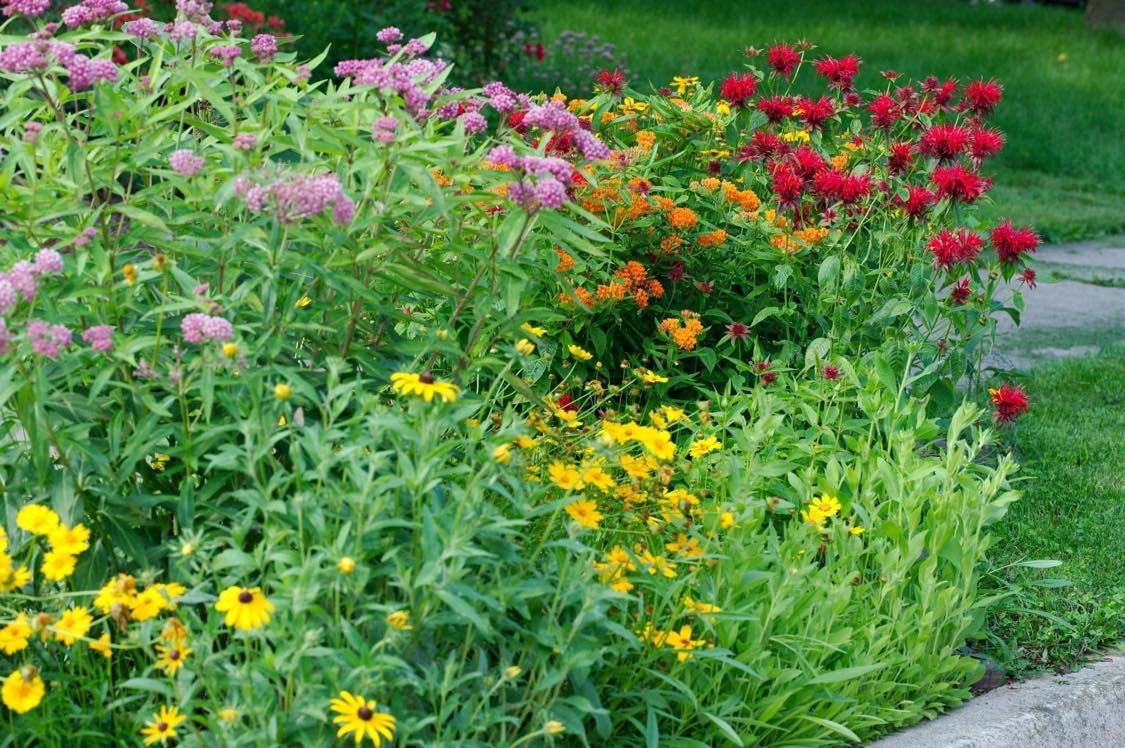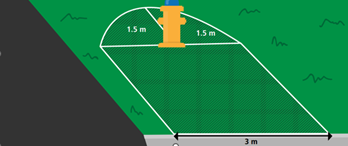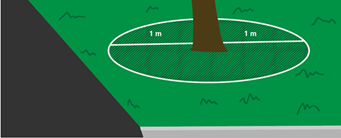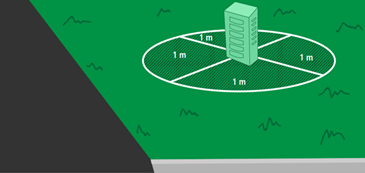Residential gardening in the City of Ottawa’s right of way
by Lynne Patenaude, with input from Wild Pollinator Partners members and City staff
PRINTABLE BROCHURE (PDF) created by Lesley Mather of @jeledesign
You can now plant right up to the curb in front of your house! In 2023 the City of Ottawa’s Use and Care of Roads By-law 2003-498 was updated to permit residents to plant on the land that abuts your property, adjacent to the street. This land, known as the right of way (ROW) or boulevard, is owned by the City but cared for by the resident (see Section 5A in the bylaw for details and the summary on the website).
This ROW space between the sidewalk and the road is planted with Lance-leaved Coreopsis, Black-eyed Susan, Butterfly Weed, Beebalm, and Swamp Milkweed. Photo by Laura Vargas.
How deep is the ROW?
Check how deep the City’s ROW is by entering your address on the City’s GeoOttawa map.
The ROW may be the first 2-3 m from the curb, which in older areas may be most of the front yard.
Why plant in the ROW?
Our cities need more green spaces that add beauty and biodiversity. Planting within the ROW can create connected corridors of habitat for pollinators and make our ecosystem more resilient. Replacing turf-grass with plants can help minimize flooding, restore groundwater, provide cooler areas for walking, and help our planet stay cool.
Restrictions
The City now allows you to install “soft landscaping,” which means plant-based material, on ROWs in residential neighbourhoods. You are not allowed to use bricks, pavers, rocks, stones, concrete, tiles, or wood (including raised beds).
To prevent damage to tree roots and maintain access to infrastructure, the City has set the following limits or “set-backs.” This means you can’t plant directly beside these objects and must maintain a minimum distance, as highlighted in the slideshow below.
What can you plant?
“Soft landscaping” includes flowers, grasses, shrubs and plant-based mulch. Plants must be one m or less in height, and 75 cm or less in height in the visibility triangle at a street corner.
We encourage you to use plants that are locally native because they will best support the butterflies, bees, and birds that evolved with these plants. Ornamental plants that are not invasive are also permitted.
Please visit this blog post to see our lists of recommended plants: https://www.osean.org/blog/recommended-native-plants-for-ottawa-row-right-of-way-gardens
Which plants are not allowed?
Residents may not plant trees in the ROW. If you would like a tree (there are many reasons you should), please contact the City’s Trees in Trust program.
At present, the City does not allow plants for consumption, such as vegetables and herbs. This will be reviewed in 2024.
The bylaw lists some specific invasive plants that are not permitted in the ROW, as well as other regulated noxious weeds and invasive plants. This includes many plants that may still be sold at nurseries:
Invasive ground covers
Creeping Jenny
English Ivy
Goutweed
Periwinkle
Lily of the Valley
Leafy Spurge
Japanese Spurge (Pachysandra)
Spearmint
Yellow Archangel
Invasive shrubs and grasses
Non-native honeysuckle shrubs
Burning Bush
Wintercreeper
Japanese & Common Barberry
Multiflora roses
Miscanthus grass
Other invasive plants
Dame’s Rocket
Ditch Lily aka Orange Daylily
Garlic Mustard
Dog-strangling Vine
Buckthorns (European, Glossy)
Knotweeds (Japanese, Bohemian, Giant)
Giant Hogweed
Wild Parsnip
Invasive Phragmites
Ragweed
Poison Ivy
Wild Chervil
Knapweeds
Thistles (Canada, Bull)
Coltsfoot
Spurge (Cypress, leafy)
How to get started
Contact Ontario One Call to locate underground wires and infrastructure so you know where to dig.
Use hand tools only. No machinery is permitted.
Suggestions for native plants that meet the height restriction are found below, listed by bloom time, from spring to fall. To best help our pollinators, try to choose flowers so you have blooms in all three seasons.
This is a plain-language summary drafted by Lynne Patenaude for Wild Pollinator Partners and the Ottawa South Eco-Action Network. For full details, please consult Bylaw 2003-498 and the City of Ottawa’s official summary.
Revised: March 2024







